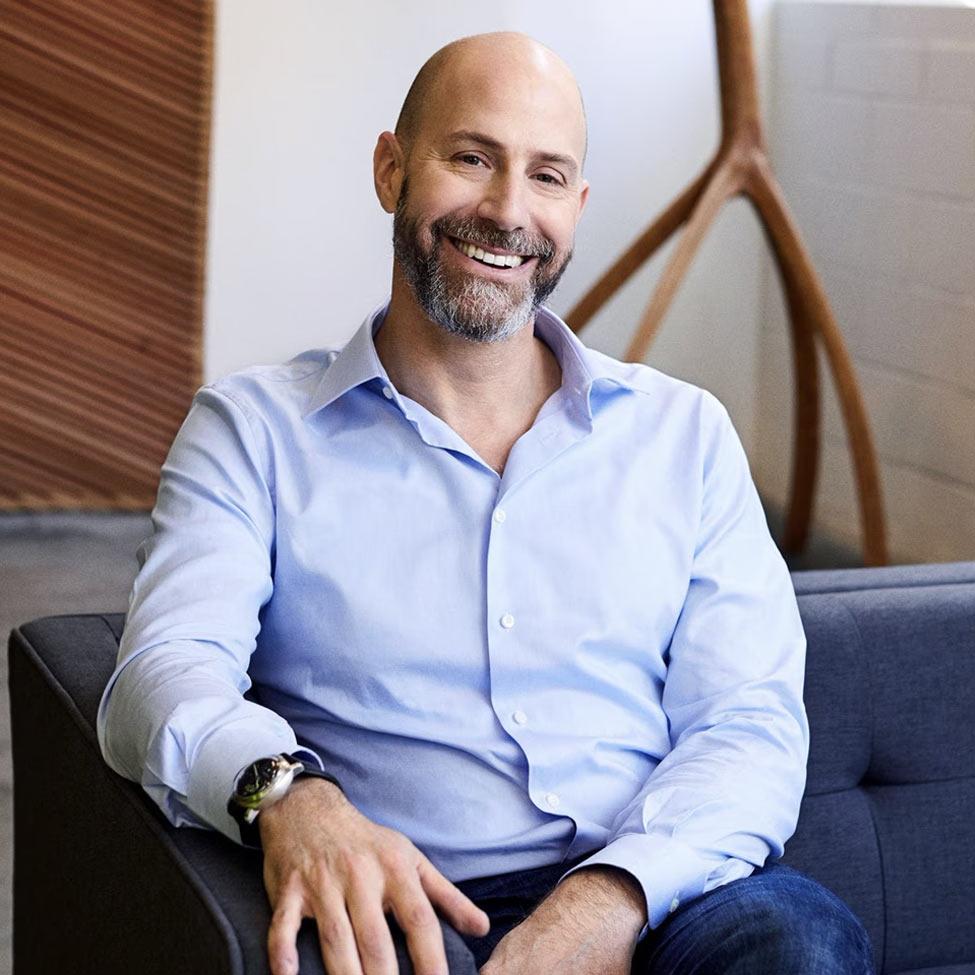
Commencement 2025: Announcing This Year’s Speakers and Honorees
We’re proud to announce this year’s Honorary Degree Recipients, speakers, and honorees—an extraordinary group of leaders and changemakers who bring a wealth of experience, innovation, and inspiration to the Class of 2025.

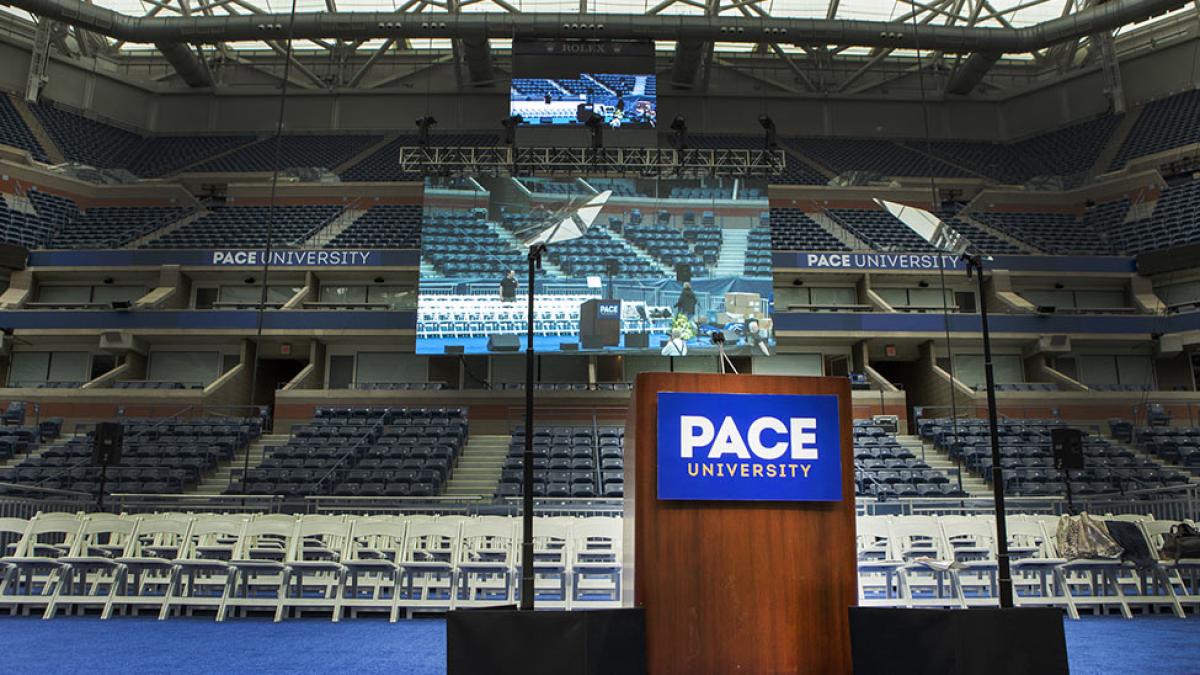
The moment we’ve all been waiting for is finally here. We’re proud to announce this year’s Honorary Degree Recipients, speakers, and honorees—an extraordinary group of leaders and changemakers who bring a wealth of experience, innovation, and inspiration to the Class of 2025.
Among them are the CEO of Etsy and longtime tech innovator, a Golden Globe-nominated actor and Pace alumnus, a nationally recognized nurse leader and Pace nursing graduate, and New York City’s Fire Commissioner and Haub Law alumnus. These remarkable individuals will help us mark the occasion with wisdom, creativity, and heart as we celebrate our graduating students this May.

Josh Silverman
Chief Executive Officer, Etsy
Honorary Degree Recipient and Speaker at the Main Ceremony
Josh Silverman is Etsy’s chief executive officer, leading the company as it builds a platform that empowers creative entrepreneurs around the world. He is also a member of Etsy’s board of directors.
Josh’s two decades of leadership experience include growing consumer technology companies and scaling global marketplaces. He previously served as president of Consumer Products and Services at American Express, CEO of Skype, and CEO of Shopping.com, and he held various executive roles at eBay. Earlier in his career, Josh co-founded Evite, Inc., where he also served as the company’s CEO. He is currently on the board of directors of Shake Shack.
Josh was previously a member of the Stanford Business School Management Board and the Lincoln Center Theater board.
Lorelei Atalie Vargas
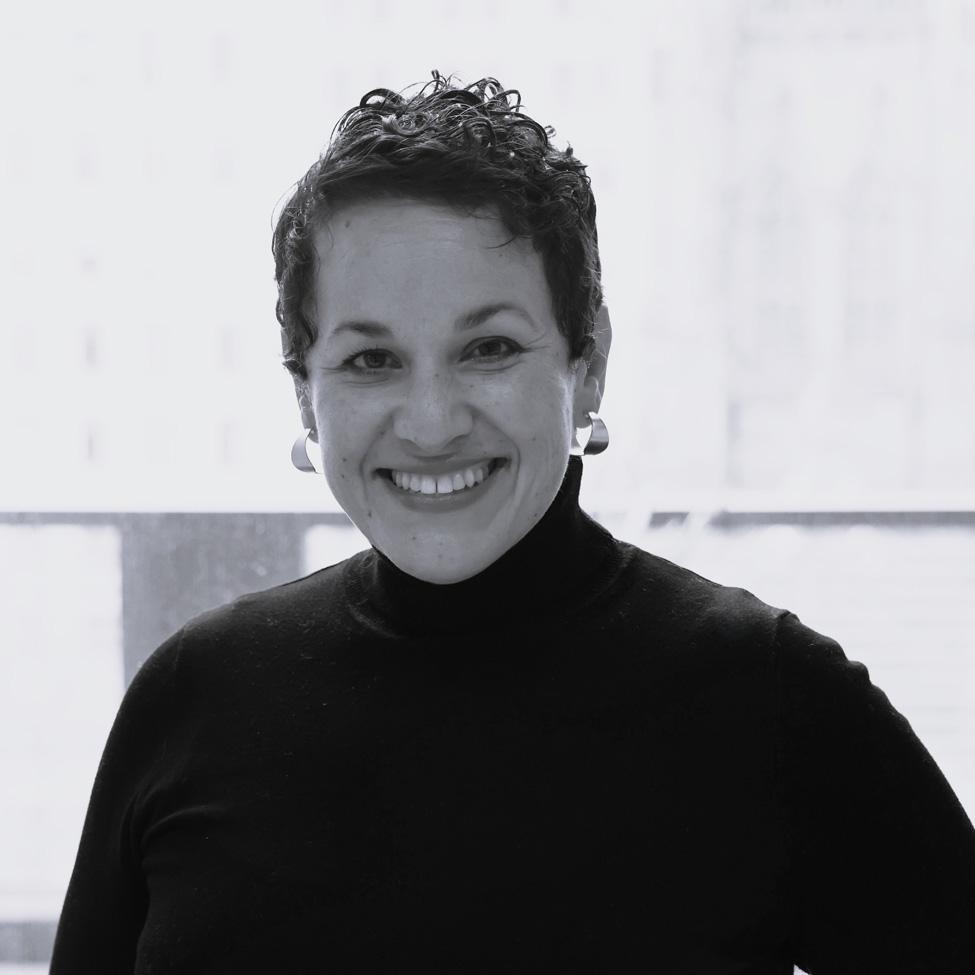
Chief Community Impact Officer, Trinity Church Wall Street
Winner of the Opportunitas In Action Award
Lorelei Atalie Vargas has three decades of experience in the nonprofit and government sectors, creating community-level opportunities that strengthen the lives of children and families. She currently serves as chief community impact officer of Trinity Church, where she developed and leads a place-based initiative to address the well-being of communities in Lower Manhattan. This initiative combines targeted philanthropic investments with on-the-ground support to meet immediate needs and address root causes. She also sits on several boards, most recently joining the board of the Puerto Rican Women’s Foundation—the first and only women’s fund in Puerto Rico—supporting organizations that serve and advocate for women, girls, and the nonbinary community.
Prior to her current appointments, Lorelei served as deputy commissioner for child and family well-being with the City of New York’s Administration for Children’s Services. There, she advocated for, designed, developed, and administered the country’s first child welfare division dedicated to using a two-generation approach to strengthen programs, leverage existing resources, and build on the assets inherent in families.
She also previously served as New York City’s deputy commissioner of early care and education, leading the country’s largest publicly funded, subsidized child care system—serving nearly 110,000 children with an annual budget of over $1 billion. In this role, Lorelei successfully led reforms that expanded access to and improved the quality of care for low-income children.
Before entering city government, Lorelei spent more than a decade at a Westchester-based nonprofit, where she led the organization’s work to implement a trauma-informed organizational culture model across more than 300 child-serving organizations worldwide. Her career has included work in New York City government and nonprofit settings in New York, Detroit, Chicago, and Philadelphia, providing her with a rich understanding of the systems that support low-income and oppressed communities. She uses that knowledge to shape sustainable change for families, communities, policies, and systems.
Fully bilingual in English and Spanish, Lorelei earned her Bachelor of Arts degree from Bryn Mawr College, where she currently serves on the board of trustees and on the board of advisors for Bryn Mawr’s Graduate School of Social Work and Social Research. She also holds two master’s degrees—one in public policy and one in education administration and policy—from the University of Michigan in Ann Arbor, where she was a Woodrow Wilson Fellow.
Lorelei was named a Pahara Fellow (2017) for her work on equity in early childhood education and an Ascend Fellow (2018) for her leadership in developing two-generation systems from the Aspen Institute, where she is a member of the Aspen Global Network. In 2020, she was named to City & State New York’s Responsible 100 list for her thought leadership in creating transformational social change during the pandemic. In 2024, she received the Partnership for Afterschool Education’s Afterschool Champion Award for her career-long commitment to advancing educational opportunities for youth.
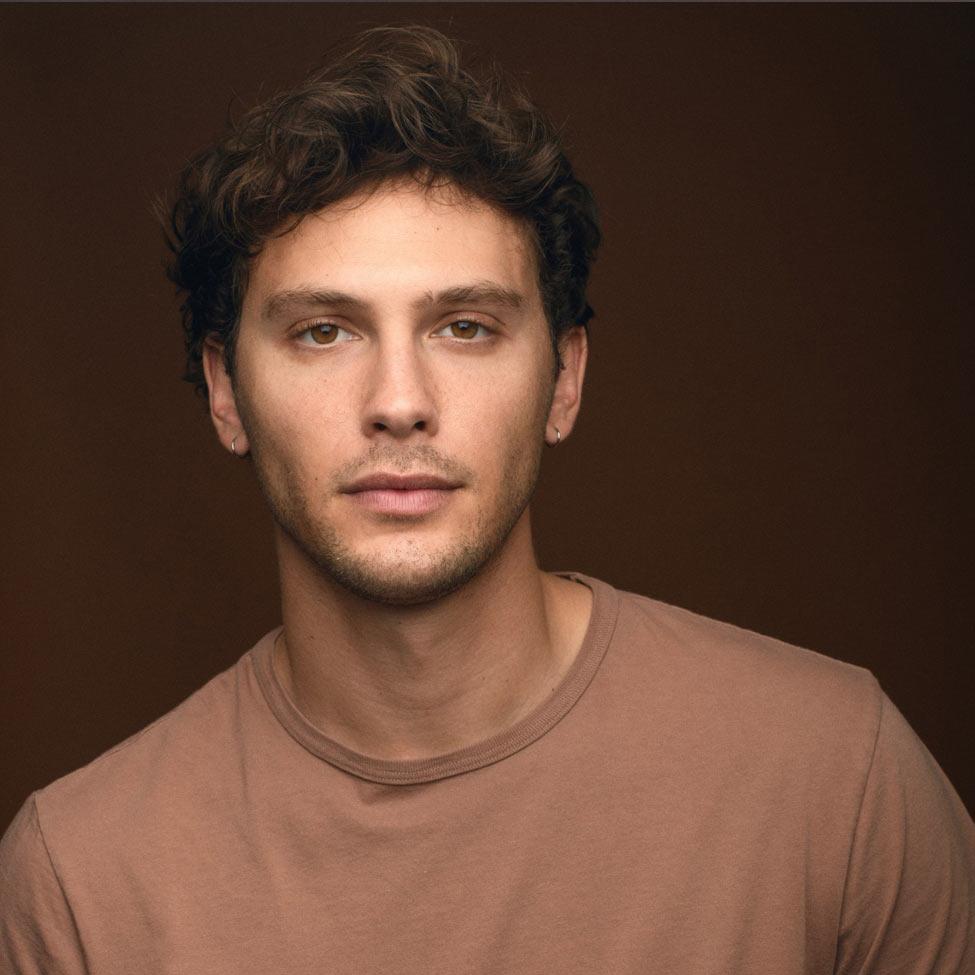
Cooper Koch ’18
Actor
Speaker at the Dyson College of Arts and Sciences, Sands College of Performing Arts, and School of Education Undergraduate Ceremony
Cooper Koch is an American actor who received a Golden Globe nomination for his portrayal of Erik Menendez in the biographical crime drama series Monsters: The Lyle and Erik Menendez Story. He has also appeared in the slasher film They/Them and the body horror film Swallowed.
Cooper graduated from Pace School of Performing Arts with a BFA in acting in May 2018.
Launette Woolforde, EdD ’93
Deputy Chief Nursing Officer, Northwell Health
Honorary Degree Recipient and Speaker at the Lubin School of Business, College of Health Professions, and Seidenberg School of Computer Science and Information Systems Undergraduate Ceremony
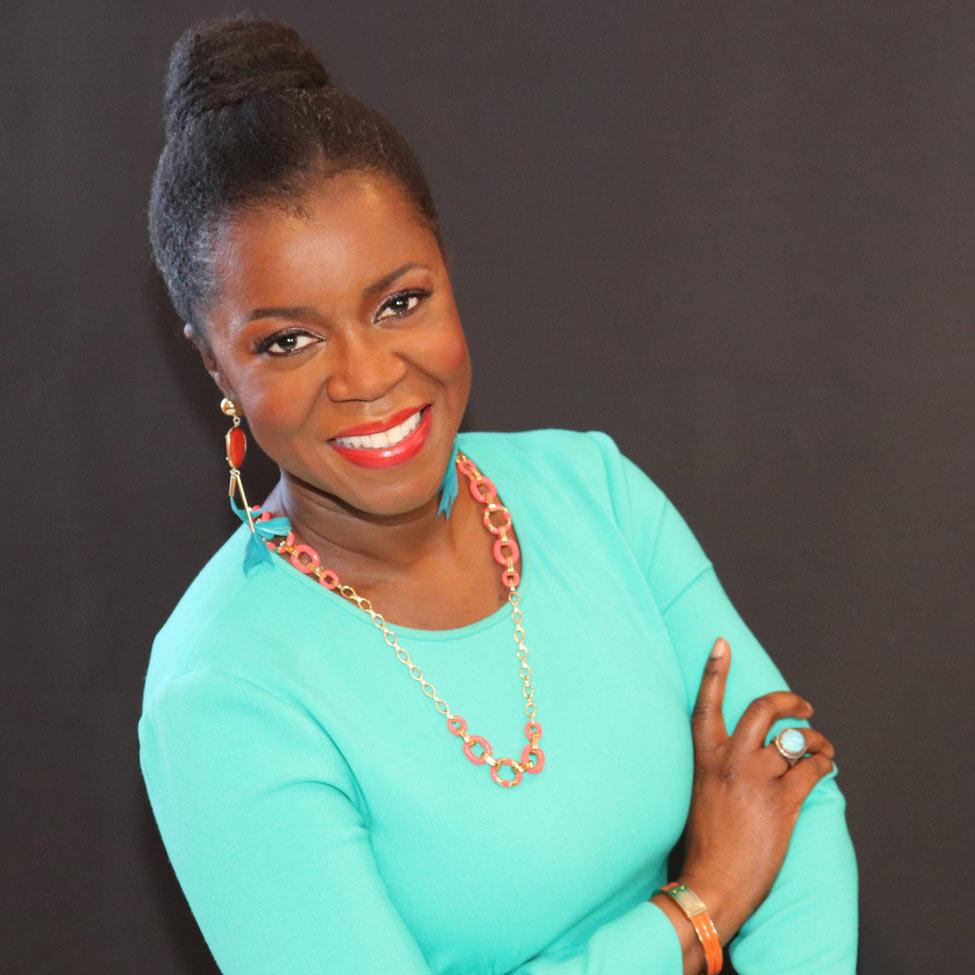
Dr. Launette Woolforde is the deputy chief nursing officer for Northwell Health and assistant professor at the Donald and Barbara Zucker School of Medicine at Hofstra/Northwell.
With 88,000 employees, including 19,000 nurses, Northwell Health is the largest employer and largest health system in New York State. Dr. Woolforde developed its system-wide nurse residency program, which is accredited with distinction by the American Nurses Credentialing Center (ANCC). She established the health system’s infrastructure that enabled growth from three Magnet hospitals to eleven—the most of any health system in New York.
Dr. Woolforde began her 32-year nursing career as a student at Pace University, earning a Bachelor of Science in Nursing from the Lienhard School of Nursing. She earned a master’s degree from Hunter College and a post-master’s certificate from the College of New Rochelle. She earned a Doctor of Nursing Practice from Case Western Reserve University as well as a Doctor of Education from Columbia University’s Teachers College—pursuing both degrees simultaneously and becoming the first nurse at Northwell to earn two doctoral degrees.
Dr. Woolforde has served as an executive board member at the National League for Nursing, the country’s oldest nursing organization, and on the board of the Association for Nursing Professional Development (ANPD). For her many contributions to the profession, she received the Sigma Theta Tau Honor Society for Nursing International Founders Award, was named the American Nurses Credentialing Center’s National Certified Nurse of the Year, and was inducted into Columbia University Teachers College Alumni Hall of Fame. She holds two board certifications and is a fellow of the New York Academy of Medicine, the Health Management Academy, and the esteemed American Academy of Nursing.
Robert Tucker ’96

New York City Fire Commissioner
Honorary Degree Recipient and Speaker at the Elisabeth Haub School of Law Ceremony
Robert S. Tucker is the 35th New York City fire commissioner. A lifelong New Yorker, Commissioner Tucker grew up in Manhattan and attended George Washington University. He went to law school at the Elisabeth Haub School of Law at Pace University at night while working as the special assistant to the late Queens District Attorney Richard A. Brown. The experience allowed him to work closely with an extensive network of executive-level members of the New York City Police Department and the city administration, as well as the Federal Bureau of Investigation, the U.S. Secret Service, and other public safety entities.
In 1999, he founded T&M USA, an international security and investigations firm. During his time at T&M, he was also devoted to philanthropic work. This included service as a trustee of the New York City Police Foundation and on the board of directors of White Plains Hospital, Pace University, and the FDNY Foundation.
As a 1996 graduate of the Elisabeth Haub School of Law at Pace University, Commissioner Tucker has a deep connection to his alma mater and served on Pace University’s Board of Trustees from 2018 until 2024. In 2017, through his generous support, Haub Law established the Robert S. Tucker Prize for Prosecutorial Excellence to recognize individuals who have made outstanding contributions to criminal prosecution and exemplify excellence in prosecutorial practice.
Commissioner Tucker prides himself on being a son of the city and the father of three children—two daughters and a son. He is the grandson of the late Richard Tucker, an American operatic tenor and cantor long associated with the Metropolitan Opera.
Serving as the FDNY commissioner is the realization of Commissioner Tucker’s lifelong dream.
Anjali Sud
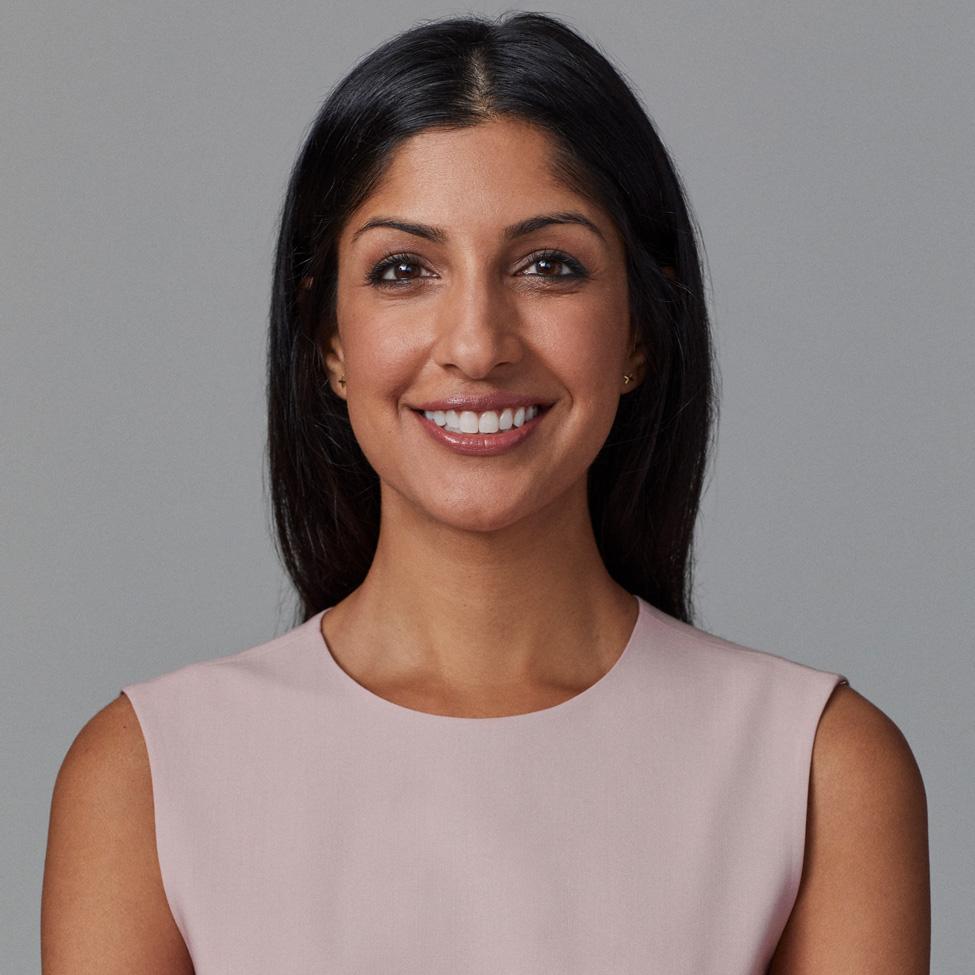
Chief Executive Officer, Tubi
Honorary Degree Recipient and Speaker at the Seidenberg School of Computer Science and Information Systems Graduate Ceremony
Anjali Sud is CEO of Tubi, America’s most-watched free TV and movie streaming service. Under Sud’s leadership, the company has exhibited exciting growth and momentum—scaling to over 97 million monthly active viewers, expanding globally, and solidifying its position as a major entertainment destination.
Prior to Tubi, Anjali served as CEO of Vimeo, the global online video platform. During her six-year tenure, she took the company public and established Vimeo as the home for video creators and professionals worldwide, building a community of over 300 million users. Before that, she held various positions in e-commerce and media at Amazon and Time Warner.
Anjali has been featured in Fortune’s “40 Under 40,” The Hollywood Reporter’s “Most Powerful Women in Entertainment,” Bloomberg’s “Ones to Watch,” and CNBC’s “Changemakers.” She is a designated Young Global Leader of the World Economic Forum and a Henry Crown Fellow at the Aspen Institute.
She serves on the board of directors of Dolby Laboratories and SiriusXM, and as chair of the board of Change.org. Anjali grew up in Flint, Michigan, and lives in New York City with her husband and two young sons.
Stay tuned to the Commencement website for more information about speakers and nominees, important information about deadlines (application to graduate, ticket ordering, and caps and gowns), the full schedule of events for May 19 and 20, and more. Can’t wait to see you on your big day!
More from Pace
As Commencement approaches, President Marvin Krislov celebrates the achievements of Pace students, highlights inspiring honorees and speakers, and shares community stories, resources, and reminders to help everyone finish the semester strong.
Jabari Nurse ’26 led Setter basketball to one of its most successful seasons, all while continuing to excel in the software development arena.
Lizi Imedashvili ’26 came to Pace University seeking opportunity—and she’s made the most of every one. From leading student orgs to managing a student-run business, the Information Systems major has embraced leadership, experiential learning, and community.
April 2025: A Message from President Krislov
As Commencement approaches, President Marvin Krislov celebrates the achievements of Pace students, highlights inspiring honorees and speakers, and shares community stories, resources, and reminders to help everyone finish the semester strong.
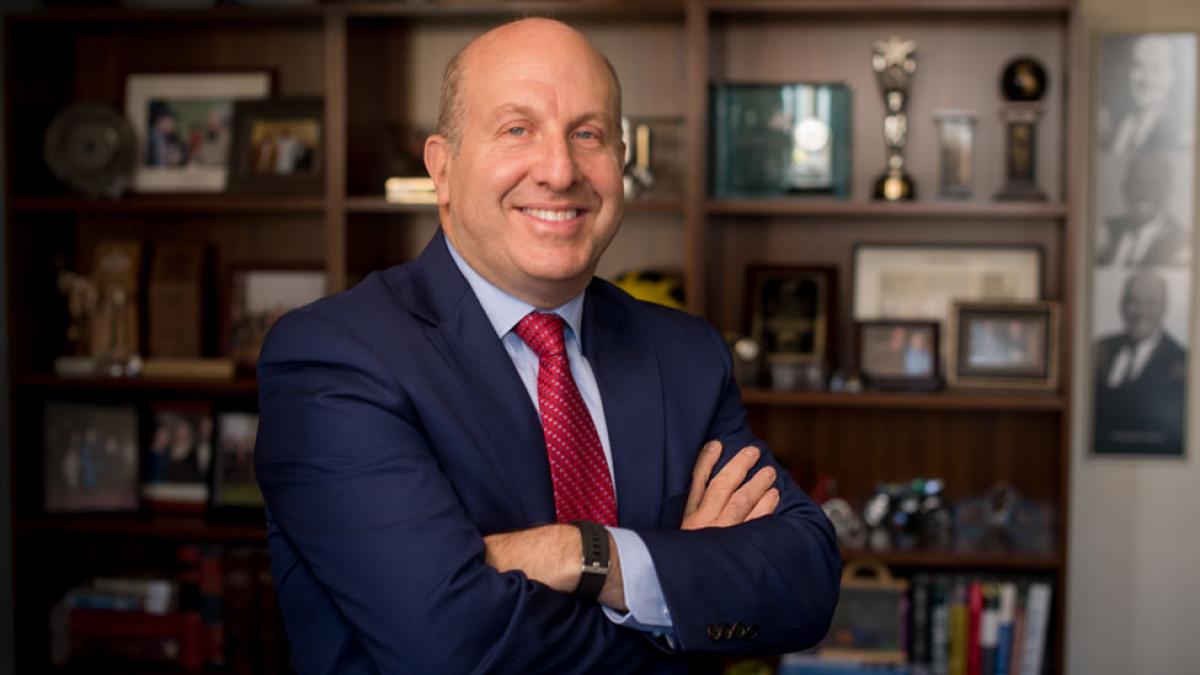
The countdown is on.
Commencement season is almost here, and we can’t wait to celebrate all that our graduates have accomplished. This is one of my favorite times of year—it’s a moment to reflect on how far our students have come and to look ahead to all the incredible things they’re about to do next.
This year, we’re excited to welcome an outstanding group of speakers and honorees whose stories speak to the very heart of our mission—Opportunitas. They’re creators, leaders, changemakers. And they exemplify what’s possible when talent meets determination and opportunity. Find out more about our speakers, FAQ, and other important information about Commencement.
As we close out the semester, this issue of Pace Now shines a light on members of our community who are going for it every day. You’ll meet international student Lizi Imedashvili ’26 and student-athlete Jabari Nurse—who brings leadership and positivity to everything he does. You’ll also hear from SOE professor Carieann Sipos, whose dedication to preparing future educators is helping shape the next generation.
We’re also highlighting some important resources to support your well-being, including Mental Health First Aid training. And if you're a student, remember: it’s time to plan ahead. Graduate registration opens April 7, and undergraduates can start registering on April 14. Here’s how to get started.
Let’s finish the semester strong—and I’ll see you at Commencement.
Warmly,
Marvin Krislov
President, Pace University
More from Pace
Jabari Nurse ’26 led Setter basketball to one of its most successful seasons, all while continuing to excel in the software development arena.
As mental health becomes a global priority, expanding initiatives like mental health first aid can create lasting change across communities worldwide. Here's how we’re making it happen right here at Pace.
Lizi Imedashvili ’26 came to Pace University seeking opportunity—and she’s made the most of every one. From leading student orgs to managing a student-run business, the Information Systems major has embraced leadership, experiential learning, and community.
Finding Her Place at Pace
Lizi Imedashvili ’26 came to Pace University seeking opportunity—and she’s made the most of every one. From leading student orgs to managing a student-run business, the Information Systems major has embraced leadership, experiential learning, and community.
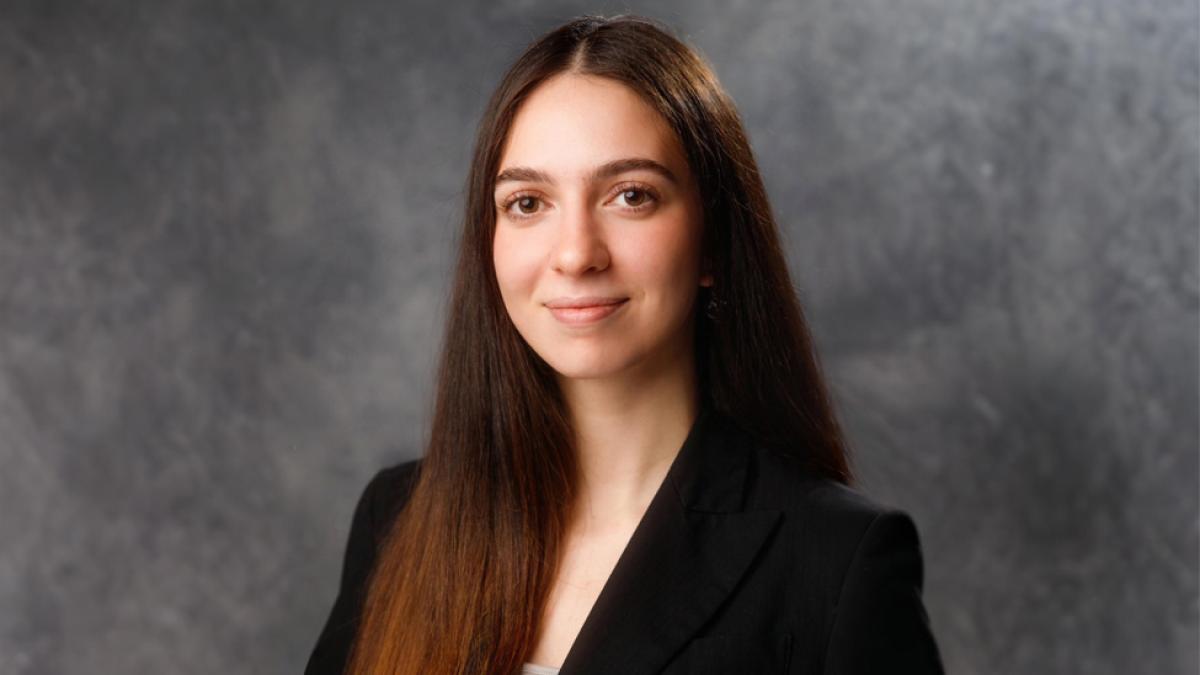
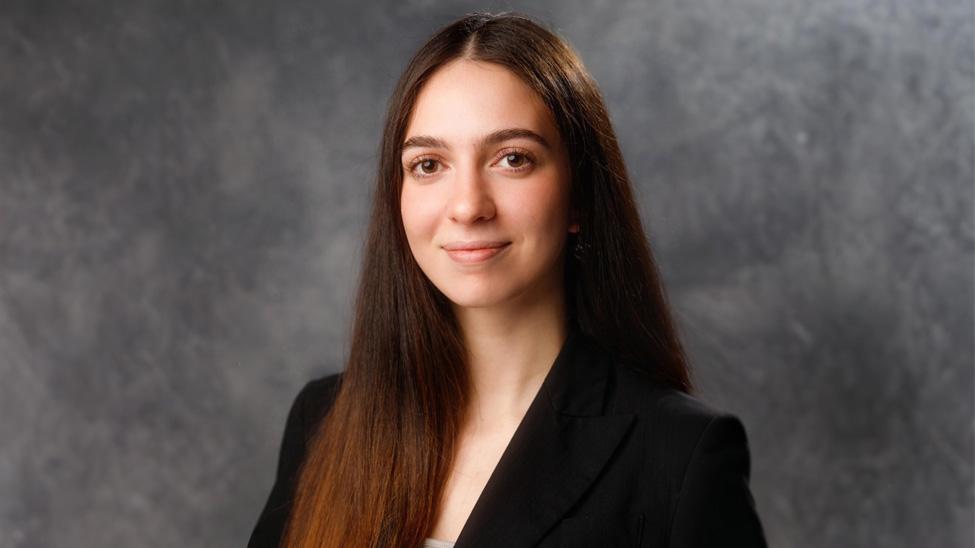
From the moment she set foot on campus, Lizi Imedashvili ’26 knew she was exactly where she was meant to be. Drawn to Pace University’s unique blend of experiential learning, leadership opportunities, and its dynamic New York setting, she quickly immersed herself in the community—taking on roles as president of the Lubin Business Association, resident assistant, general manager of Pace Perk Mart, and Peer Leader for First-Year Seminar. As an international student from the Eastern European country of Georgia, Lizi embraced every challenge as a chance to grow, finding a strong support system at Pace that fueled her drive to lead, mentor, and make a tangible impact. Now pursuing a BS in Information Systems at the Seidenberg School of Computer Science and Information Systems, she’s harnessing her passion for business and technology to carve out a future in project management.
You’ve taken on so many leadership roles at Pace—what initially drew you to the university, and how has your experience here shaped your goals?
It has always been my dream to study in New York at a place that offers a lot of opportunities and unique experiences. Along with strong academics, I knew I wanted to apply what I was learning actively, and Pace offered both! I saw the opportunity to have real-world learning, and I knew this was the place I wanted to be.
Since coming here, I’ve taken on multiple leadership roles, each of which has helped me grow in ways I didn’t expect. Being a part of Lubin Business Association, Pace Perk Mart, and Residential Life has taught me how to manage a team, solve problems on the spot, and handle real-world challenges. These experiences helped me shape my long-term goals and figure out what I loved doing! I’ve realized that I thrive in fast-paced environments where I can manage projects, take the lead, work with different people, and make an impact. Pace has given me the confidence to take on new challenges, and I know the skills I’ve gained here will help me in whatever path I choose next.
As an international student from Georgia, what has your journey been like adjusting to life in New York and at Pace?
Moving to a new country is always a huge adjustment. Coming to New York from Georgia was a big but exciting change. Everything felt new and a little overwhelming—the fast-paced lifestyle, the academic system, and even how people interact. I saw it as an opportunity to challenge myself and grow, which I was able to do thanks to the incredible support at Pace.
At first, I was nervous about fitting in, but Pace’s welcoming, diverse community made it easier. From day one, people were excited to help, and each new connection made me feel part of something bigger. Older students offered advice, introduced me to organizations, and connected me with valuable resources, giving me a sense of belonging.
Becoming part of the Seidenberg School has been a huge part of my journey. The faculty and staff have been incredibly understanding of the challenges I might face as an international student. I’ve also met international students from all over the world, which has been so comforting.
Pace has allowed me to connect with people from different backgrounds, motivating me to get involved and help others feel as supported as I did. The opportunities here, both academically and socially, have made a huge impact. Looking back, I can confidently say I’ve found my place and grown as a person and a leader.
You wear so many hats—president of the Lubin Business Association, resident assistant, GM of Pace Perk Mart, and a Peer Leader for First-Year Seminar. How do you balance all of these responsibilities?
I won’t lie—there are days when it feels like there just aren’t enough hours! But I’ve learned that balancing multiple responsibilities comes down to time management, prioritization, and most importantly, having resources and a support system that I can lean on.
I rely on planning and organization. My day starts with looking at my calendar and ends with updating it. I like to plan and get on my tasks as soon as possible, and using calendars, to-do lists, and reminders helps a lot with this.
The biggest lesson I’ve learned is that I don’t have to do everything on my own. I work with great teams, and I can always rely on them. Trusting the people I work with has made all the difference. Knowing when to delegate and lean on my team not only makes my responsibilities more manageable but also ensures we all succeed together.
As GM of Pace Perk Mart, what have you learned about business operations, and how has it helped you grow as a leader?
Managing Pace Perk Mart has been one of the most valuable hands-on experiences I’ve had. It’s a student-run business, so we’re responsible for everything: inventory management, finances and accounting, marketing, team coordination, and customer service. As a general manager, I oversee a staff of almost 20 students and have weekly meetings with finance, marketing, and purchasing managers to discuss business operations.
I make it a point to be involved in day-to-day operations, showing my team that I’m invested in their success and the business’s success. I focus on creating a positive work environment where everyone feels valued, which has helped build a stronger, more motivated team.
What are some of the most rewarding aspects of being a Peer Leader and helping first-year students navigate college life?
Being a peer leader is one of those roles where you see the impact of your work firsthand. First-year students come in feeling overwhelmed, unsure of how to navigate college, and sometimes even doubting themselves. Getting to help them adjust, give them advice, and see them is incredibly rewarding. I love creating an environment where students feel supported and empowered.
What’s truly rewarding is seeing the students I’ve worked with go on to become Peer Leaders themselves or join departments I’ve been a part of because I connected them to my network. Watching them grow and knowing I played a role in that journey makes all the difference for me.
What inspired you to pursue Information Systems, and how does it align with your future ambitions?
Since I was very little, solving problems and working with numbers has always been my passion, and during my high school years, I discovered that I enjoyed applying this to both the business and technology worlds. During my first year at Pace, I was a business major, but I didn’t know exactly what I wanted to do with it. I added a computer science minor, and I ended up loving it. I realized that I was more drawn to technology, but I valued the business experience as well.
As someone passionate about leveraging technology to solve real-world problems, it made sense to pursue a field that combines both. Information systems not only supports my love for technology but also positions me for a career as a project manager.
The classes I’m taking and the connections I’m making with professors are already giving me the skills and network I need to get started in my career, and I’m excited to see where this path takes me.
How has Pace supported your career development, whether through internships, faculty mentorship, or networking opportunities?
In UNV 101, I made my four-year plan, where I outlined what I wanted to achieve here at Pace. I listed some of the positions I wanted to get, and to start working toward those goals, I started getting involved in multiple organizations and departments. Landing those jobs wouldn’t have been possible without the support of my professors and Career Services, who helped me every step of the way.
Career Services helped me build my resume, prepare for internships, and connect with professionals. With the help of Career Services in preparation for my interview, along with skills I’ve developed through my classes and campus jobs, I was able to land an internship at Select Equity Group as an Information Technology Intern during my sophomore year. I’m still currently working there, and the role has been an amazing experience. It’s allowed me to work on a variety of projects, dive deeper into the technology world, and gain valuable hands-on experience that will help me as I work toward my goal of becoming a project manager.
In addition, the professors in Seidenberg don't just teach; they connect students with real-world applications. Our professors have industry backgrounds and regularly share job opportunities and introduce students to their professional networks. The school also hosts industry panels that have allowed me to connect with professionals in the information systems field specifically. In addition to that, I’m currently working on a research project with my Professor Schmidt, which has been an incredible opportunity as well.
What do you love most about being a student at Pace University?
What I love most about being a student at Pace is the sense of community and the endless opportunities. From internships and career fairs to student organizations and leadership roles, there’s always something that can help you take your skills to the next level. I’ve met so many inspiring people along the way, whether it’s professors who genuinely care about your success or students who share similar interests and passions. These opportunities have allowed me to step out of my comfort zone and gain hands-on experience. Pace provides the resources to make these experiences happen, and that’s what makes being a student here so rewarding.
What advice would you give to other international students who are considering Pace?
My advice to other international students considering Pace would be to embrace every opportunity and not be afraid to step outside your comfort zone. I know it can be overwhelming, but Pace offers a supportive community that makes the transition smoother, and the experiences that you’ll get here are worth it! I’d also say to take a deep breath and know that you’re not alone in this journey. Moving to a new country means leaving behind everything familiar, and that takes incredible courage. Get involved early, even when it feels scary.
What’s next for you? Any big goals or plans after graduation?
After graduation, I plan to pursue a career in project management in the technology industry, leveraging my degree and the experience I've gained at Pace. Through my internship at Select Equity Group’s IT department, I am gaining valuable experience in technology operations and project coordination, and I hope to continue building on that. I also plan to continue my education. I want to get certifications in project management and eventually go for a master's degree. My goal is to grow in this field, take on bigger projects, and keep challenging myself along the way.
More from Pace
As Commencement approaches, President Marvin Krislov celebrates the achievements of Pace students, highlights inspiring honorees and speakers, and shares community stories, resources, and reminders to help everyone finish the semester strong.
We’re proud to announce this year’s Honorary Degree Recipients, speakers, and honorees—an extraordinary group of leaders and changemakers who bring a wealth of experience, innovation, and inspiration to the Class of 2025.
Jabari Nurse ’26 led Setter basketball to one of its most successful seasons, all while continuing to excel in the software development arena.
Building a Community of Mindfulness
A growing team of ‘Mindfulness Champions’ is leading a movement to make Pace a more connected, resilient place. Learn more in this Q+A with Sophie Kaufman, PhD, assistant dean for Grants and Strategic Initiatives in the College of Health Professions and leader of the new Mindfulness Community.
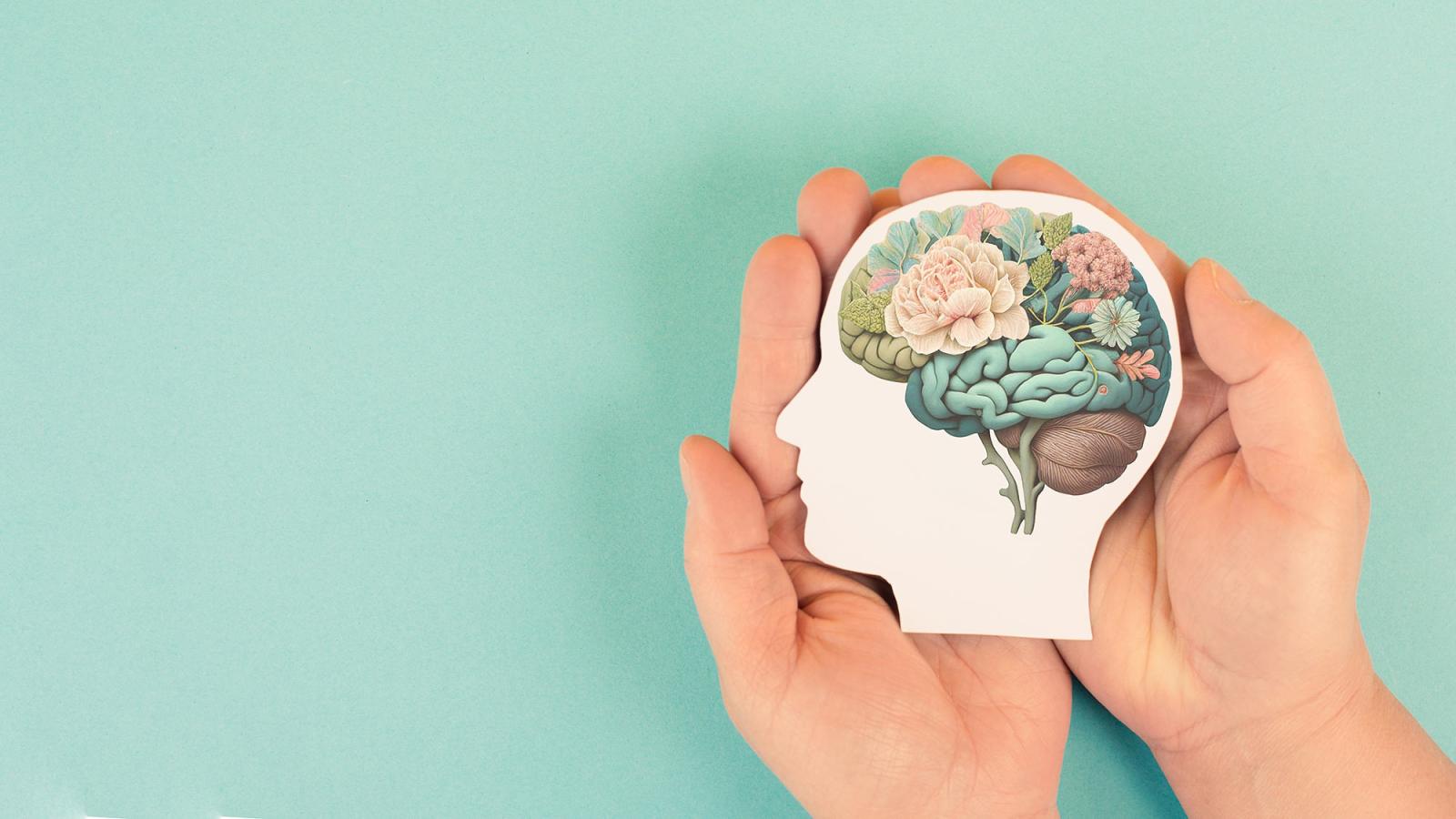
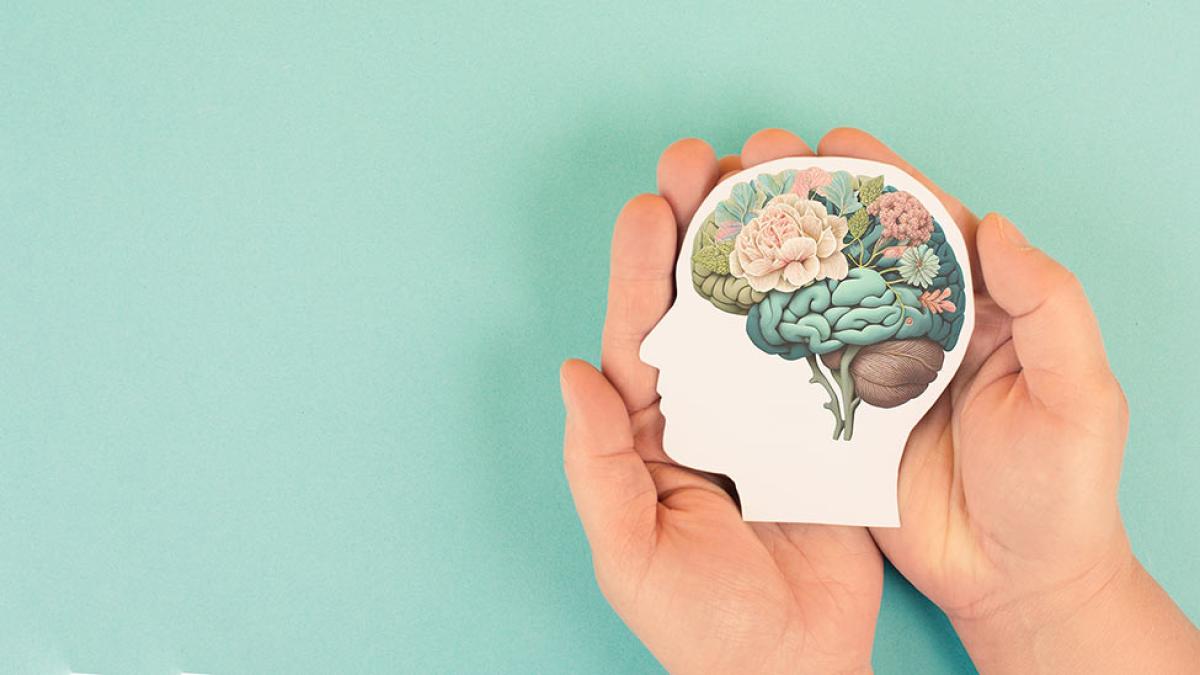
A new wellness initiative at Pace is proving that mindfulness matters.
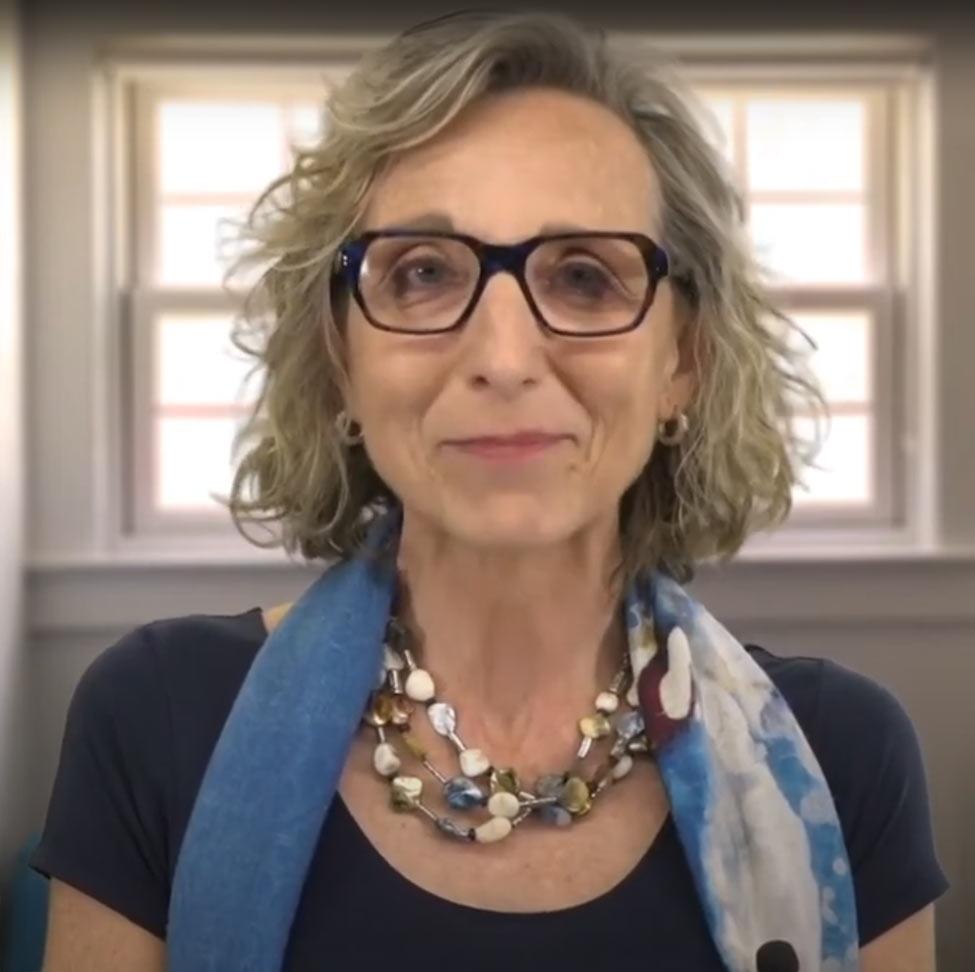
Sophie Kaufman, PhD, College of Health Professions assistant dean for Grants and Strategic Initiatives, is leading the launch of a Mindfulness Community at Pace, aimed at fostering connection, collaboration, and wellbeing through mindfulness. With more than 30 “Mindfulness Champions” already on board, the initiative is set to deepen Pace’s commitment to wellness through community.
We spoke with Kaufman about the initiative and why mindfulness matters.
What is mindfulness, and why is it important to practice it?
Mindfulness is simply the awareness of the present moment as we pay attention, on purpose, and without judgment. It is a practice that is essential to our ability to live life more joyfully and to respond to stressful situations more skillfully.
What is the Mindfulness Community?
The Mindfulness Community provides opportunities to connect among individuals interested in mindfulness practice. At Pace, several people are already engaged in mindfulness practice, research, or are simply curious about learning more. I am looking to connect the dots and bring everyone together with this initiative.
Our three primary objectives are to educate the community on the broader applications of mindfulness, build a community of mindfulness practitioners, and encourage and foster interdisciplinary research on mindfulness.
Why is mindfulness as a practice beneficial for university students?
In my experience teaching Mindfulness-Based Stress Reduction (MBSR) and offering a variety of mindfulness workshops to Pace students, mindfulness is beneficial to university students in a few different ways. The practice teaches students to recognize their anxious thoughts, their patterns of reactivity, and develop a more thoughtful response to stressors. Mindfulness helps them focus and develop more balance in their lives. Mindfulness also is about interconnectedness, and it becomes apparent to students that they are not alone, and that they, and we, all share our common humanity.
Who are the Mindfulness Champions and what do you hope they will accomplish?
The Mindfulness Champions are an amazing group of Pace faculty, staff, and students, starting with the 11 co-authors of a wellebeing mini-grant. Over the past few weeks, we have recruited an additional 20 Mindfulness Champions, altogether representing 20 different departments and all 3 campuses, and the group is growing. We have people with long-standing meditation practice, yoga teachers, mindfulness researchers, art therapists, mental health counseling students, and more—as well as faculty and staff members who have either experienced first-hand the benefits of mindfulness or want to learn more.
What is something you wish everyone at Pace knew about mindfulness?
Mindfulness takes many different forms and doesn’t require sitting on a meditation cushion for hours—it is about living life fully. At the individual level, mindfulness is essential to mental health and wellbeing, and at the societal level, it is equally essential to our ability to meet the multitude of complex challenges that we face today.
Interested? Learn more at the Mindfulness website or email Sophie at skaufman@pace.edu. For more resources like this, check out Pace’s Wellbeing Center.
CCAR’s Heather Novak a Panelist at Campus Contact’s Civic Learning Week
Heather Novak, MPA, director of Pace’s Center for Community Action and Research, joined national experts as a panelist at Campus Compact’s Civic Learning Week. She highlighted Pace’s leadership in integrating civic inquiry into the curriculum, discussing the university’s pioneering Civic Engagement and Public Value core requirement.

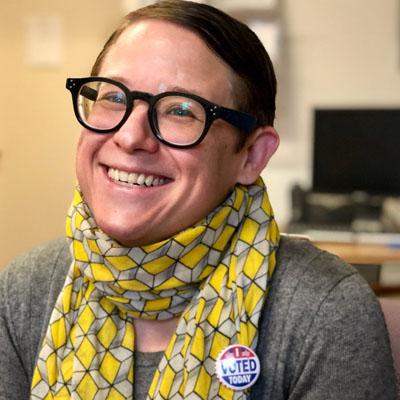
Heather Novak, MPA, director of Pace University’s Center for Community Action and Research and adjunct associate professor, Political Science, was a panelist and presenter, as part of “Creating Civic Cultures on Every Campus,” Campus Compact’s Civic Learning Week showcasing institutions reimagining civic education for all students.
The panel consisted of individuals from a selection of institutions who each demonstrated how civic learning can be woven into the fabric of every student's educational journey.
Pace has been recognized as a leader in requiring civic inquiry and engagement as part of its degree requirements for all students, and as part of this panel, Novak discussed the university’s 2002 groundbreaking Civic Engagement and Public Value undergraduate core requirement with over 90 attendees during this event held from March 11-14.
From Haub Law to the Federal Bench: Hon. Joseph A. Marutollo ‘10 Reflects on His Journey
A 2010 Haub Law alumnus, the Honorable Joseph A. Marutollo was appointed as a United States Magistrate Judge for the United States District Court for the Eastern District of New York on September 25, 2023. Previously, he was an Assistant United States Attorney in the Civil Division of the United States Attorney's Office for the Eastern District of New York, serving as Chief of the Civil Division. Judge Marutollo also serves as an adjunct professor at the Elisabeth Haub School of Law at Pace University. We sat down with him to chat about his experience at Haub Law, on the bench, and beyond.
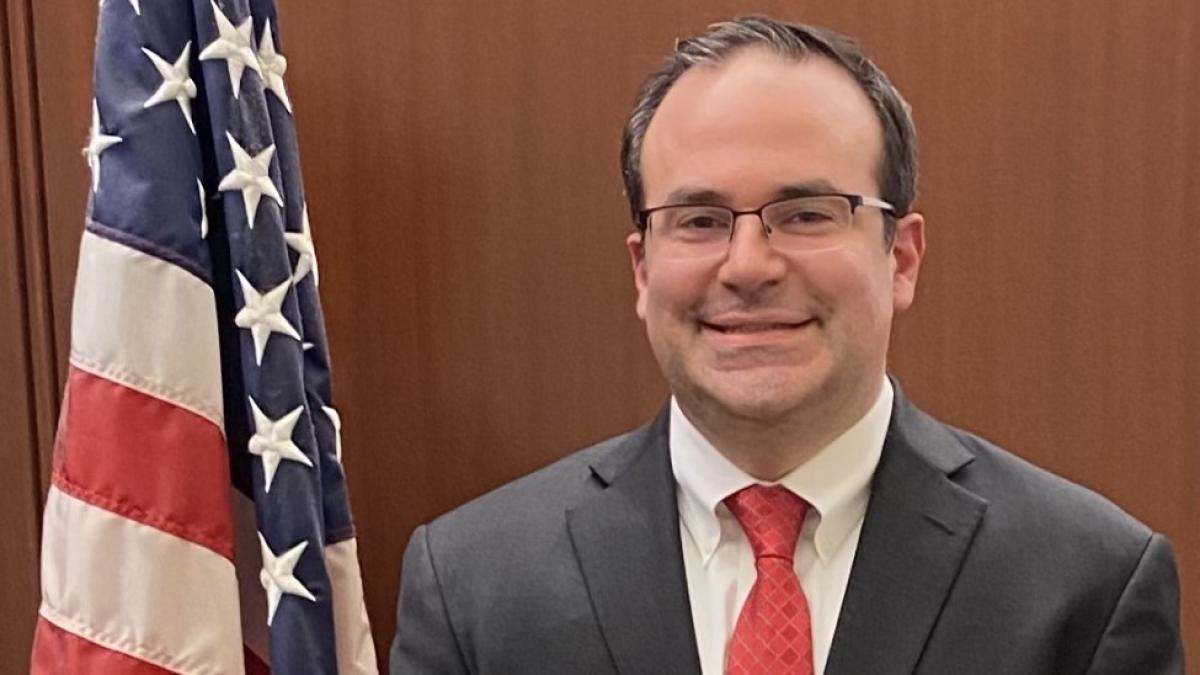

A 2010 Haub Law alumnus, the Honorable Joseph A. Marutollo was appointed as a United States Magistrate Judge for the United States District Court for the Eastern District of New York on September 25, 2023. Previously, he was an Assistant United States Attorney in the Civil Division of the United States Attorney's Office for the Eastern District of New York, serving as Chief of the Civil Division. Judge Marutollo also serves as an adjunct professor at the Elisabeth Haub School of Law at Pace University. We sat down with him to chat about his experience at Haub Law, on the bench, and beyond.
During your time at Haub Law, you participated in the Federal Judicial Honors Program (FJHP), how did you find that experience?
The FJHP offers law students the opportunity to work closely with federal judges and gain knowledge about the inner workings of the federal court system. I had the good fortune of interning for the Honorable Richard J. Sullivan, who, at the time, was a U.S. District Judge for the Southern District of New York. In 2018, Judge Sullivan was subsequently sworn in as a U.S. Circuit Judge for the U.S. Court of Appeals for the Second Circuit.
Interning for Judge Sullivan was one of the most rewarding experiences of my career. Judge Sullivan assigned me to draft opinions and prepare legal memoranda involving a host of legal issues. Importantly, over the course of the internship, Judge Sullivan personally took time out of his busy schedule to regularly meet with me and provide helpful feedback on my writing and analysis. My experience with Judge Sullivan was perfect preparation for my subsequent work as a federal prosecutor and now as a federal magistrate judge.
During my internship, I also observed Judge Sullivan’s tireless work ethic and his meticulous preparation for each of his cases—qualities that I have tried to emulate in my own career. Judge Sullivan is truly the epitome of what a judge should be: reasonable, prudent, and committed to the true administration of justice.
Judge Sullivan kindly served as one of the featured speakers at my judicial investiture ceremony in Brooklyn in 2024 and he remains a wonderful mentor and role model to me.
What did you take with you from the FJHP into your career post-law school?
Besides the insight into federal litigation and the work of federal practitioners, FJHP also showed me the enormous effect an internship could have on a student’s career. Judge Sullivan frequently remarked that it is imperative to “pay it forward.” Similar to Judge Sullivan’s role in my career path, I have tried to “pay it forward” by serving as a mentor for my interns. While at the U.S. Attorney’s Office, I regularly worked to hire Haub Law interns for the summer internship program. Now, as a federal magistrate judge, I routinely hire Haub Law students for fall, spring, and summer internships. I hired a Haub Law and FJHP alumna, Katelyn (Rauh) Climaco '21, to be one of my first two law clerks, and she did a terrific job.
I am also thrilled to now be one of the judges in the FJHP program. I currently have an extraordinary 2L student assigned to my chambers. I am honored to be the first Haub Law alumnus to ever serve as a federal judge in the Eastern District of New York, and I know many more Haub Law alumni will join the federal bench in the years to come—especially given the magnificent work of FJHP.
Who were some of your favorite professors and what were some of your most memorable experiences from your time at Haub Law?
In addition to my positive experience with the FJHP, I am grateful to have served on the Pace Law Review, where I received extensive training in legal writing and legal editing. I am also thankful to have had myriad smart and caring professors at Haub Law, including Professors Michael Mushlin, Carol Barry, Michelle Simon, and Emily Gold Waldman.
Since graduating in 2010, you have remained active with Haub Law, most recently in serving as an Adjunct Professor – what is your favorite part of being a professor?
At Haub Law, I teach Legal Skills to first-year law students in the Flex JD program. The Flex JD Program offers flexible scheduling options to help law students balance their professional and personal commitments with their goals of obtaining a law degree. It has been extremely rewarding to see my students develop their legal writing and advocacy skills over the course of this two-semester class.
What advice do you have for students graduating from law school who want to pursue a career in public service?
Attending Haub Law afforded me the opportunity to pursue a career in public service. I have spent my entire legal career in the public sector and have enjoyed it immensely. I strongly encourage all law students to consider working in public service at some point in their careers, as the work is both important and fulfilling. I also encourage all law students to follow Abraham Lincoln’s sage advice to a young lawyer starting his career. Lincoln – who, interestingly, signed the act of Congress that created the Eastern District of New York in 1865 – told the young lawyer that “the leading rule for the lawyer is diligence. Leave nothing for tomorrow, which can be done today. Never let your correspondence fall behind. Whatever piece of business you have in hand, before stopping, do all the labor pertaining to it which can then be done.” Lincoln added that “work, work, work is the main thing.” Lincoln’s advice is powerful and practical, especially for those considering working in the public interest.
New York City Fire Commissioner Robert S. Tucker ’96 to Deliver Elisabeth Haub School of Law at Pace University 2025 Commencement Address
The Elisabeth Haub School of Law at Pace University is pleased to announce that distinguished alumnus New York City Fire Commissioner Robert S. Tucker will deliver the Law School’s commencement address at its 47th Commencement Ceremony, to be held at the USTA Billie Jean King National Tennis Center in Queens on May 20. Commissioner Tucker will also receive the Doctor of Laws, honoris causa, the highest honor conferred by the Law School, recognizing his lifelong contributions to public service, public safety, and the legal profession.


The Elisabeth Haub School of Law at Pace University is pleased to announce that distinguished alumnus New York City Fire Commissioner Robert S. Tucker will deliver the Law School’s commencement address at its 47th Commencement Ceremony, to be held at the USTA Billie Jean King National Tennis Center in Queens on May 20. Commissioner Tucker will also receive the Doctor of Laws, honoris causa, the highest honor conferred by the Law School, recognizing his lifelong contributions to public service, public safety, and the legal profession.
“Robert S. Tucker has had an illustrious career as a prosecutor and public servant, and in his current position as New York City’s Fire Commissioner,” said Horace E. Anderson Jr., Dean of the Elisabeth Haub School of Law. “He has made significant contributions to the Law School and the legal profession for three decades. His impact on Haub Law shows in many ways, including as the benefactor of the Robert S. Tucker Prize for Prosecutorial Excellence. His example highlights the opportunities available to those who use their legal education to pursue their passions and make an impact on society. We couldn’t be more pleased that Commissioner Tucker will join us as the Law School’s 2025 Commencement Speaker, imparting his advice to our students as they take the next step in their legal careers.”
"Commissioner Tucker's example highlights the opportunities available to those who use their legal education to pursue their passions and make an impact on society."
Commissioner Tucker, a 1996 graduate of the Elisabeth Haub School of Law at Pace University, was sworn in as the 35th Commissioner of the Fire Department of New York City in August 2024. He brought decades of public safety experience to the FDNY, previously serving as a special assistant to the Queens County District Attorney, and then as chairman and CEO of T&M Protection Resources, a globally recognized leader in security solutions and cyber intelligence. As Fire Commissioner, Tucker oversees the day-to-day administration of the agency’s 17,000 employees and a $2 billion budget.
Among his many professional, civic and philanthropic affiliations, Commissioner Tucker serves on the Board of Directors of the FDNY Foundation, and he was an honorary fire commissioner. He also served as a member of the Board of Trustees and treasurer of the New York City Police Foundation and as an honorary police commissioner, as well as past president of the Associated Licensed Detectives of New York state. He was also a member of the Board of Directors of White Plains Hospital and a former member of the Young Presidents’ Organization, Metro Chapter.
Commissioner Tucker served on Pace University’s Board of Trustees from 2018 until 2024 and has had a deep connection to his alma mater. In 2017, through his generous support, Haub Law established the Robert S. Tucker Prize for Prosecutorial Excellence. This honor is awarded annually to an individual or a group of individuals who have made outstanding contributions to the field of criminal prosecution and who demonstrate excellence in prosecutorial practice. Honorees are selected by a jury comprised of former prosecutors and faculty members from the Elisabeth Haub School of Law and recognized at a ceremony attended by District Attorneys from across the region and state, civic leaders, members of the judiciary, New York City government and the Haub Law community.
Of the prestigious award, Commissioner Tucker says, “It has been my privilege to recognize outstanding public servants who are committed to pursuing justice with integrity despite the many challenges they are faced with. These individuals are shining examples in our legal system who deserve to be acknowledged for their tireless efforts prosecuting criminals and keeping our communities safe.”
A lifelong New Yorker, Commissioner Tucker grew up in Manhattan chasing fire trucks on his bicycle, as he tells it. He attended George Washington University, then went to Haub Law at night while working as a special assistant to the late Queens District Attorney Richard A. Brown. That gave him the opportunity to collaborate with high-level members of the New York City Police Department and the New York City administration, as well as the FBI and the U.S. Secret Service. He is admitted to practice law in the State of New York and the U.S. Supreme Court.
Commissioner Tucker has said his service as Fire Commissioner is the fulfillment of a life-long dream, and an “opportunity to apply so many of the lessons I learned at Pace.”
The 2025 Commencement Ceremony for the Elisabeth Haub School of Law at Pace University will be live-streamed at 9:30 a.m. EST on Tuesday, May 20, from Louis Armstrong Stadium, USTA Billie Jean King National Tennis Center in Flushing, N.Y. For more information, visit the Law School’s commencement website.
Distinguished Lawyers and Alumni Honored at Elisabeth Haub School of Law at Pace University 30th Annual Law Leadership Dinner
The Elisabeth Haub School of Law at Pace University hosted its 30th Annual Law Leadership Dinner at the Westchester Country Club on Thursday, March 28, 2025, celebrating alumni and friends of the Law School whose achievements and support advance the mission of legal education and enrich the broader legal community.


The Elisabeth Haub School of Law at Pace University hosted its 30th Annual Law Leadership Dinner at the Westchester Country Club on Thursday, March 28, 2025, celebrating alumni and friends of the Law School whose achievements and support advance the mission of legal education and enrich the broader legal community.
More than 200 alumni, faculty, students, elected officials, members of the judiciary, and distinguished lawyers attended the celebration, raising vital funds in support of student scholarships, faculty research, and innovative programs at the Law School.
This year, the Law School was proud to recognize three outstanding legal professionals as Law Leadership Award honorees: Paul C. Saunders, Susan E. Galvão ’93, and Vernon J. Brown ’96.
Paul C. Saunders was recognized for his decades of excellence in litigation and his distinguished career at Cravath, Swaine & Moore LLP, where he served as a partner and later as Of Counsel until his retirement in 2014. Mr. Saunders, who holds degrees from Fordham College, Georgetown University Law Center, and NYU, is widely respected for his leadership in the profession and commitment to the advancement of legal standards and ethics.
Susan E. Galvão ’93, Co-Managing Partner at Bleakley Platt and Schmidt, LLP, was honored for her professional accomplishments and continued dedication to Haub Law. A member of the firm’s Executive Committee and a seasoned litigator, Galvão has represented a wide range of corporate and individual clients in state and federal court. She also serves on the Haub Law Board of Visitors, demonstrating her commitment to the next generation of legal professionals.
Vernon J. Brown ’96, founder of V. Brown & Company, was celebrated for his remarkable impact in the entertainment industry and his longstanding service to the Law School. Recognized by Billboard Magazine as one of the “Top Lawyers in the Music Business,” Brown has represented clients including Cash Money Records and managed over $300 million in assets. In addition to his legal and business accomplishments, he has taught entertainment law at Haub Law since 2006 and serves on its Board of Visitors.
"Each of these three honorees has made significant contributions to the Law School over many decades, leaving a lasting impact on generations of lawyers whose lives they’ve touched—often in ways both profound and personal.”
This year’s Law Leadership Dinner was emceed by Amy Divino ’91, co-chair of the Prosecution Practice at Cozen O’Connor. The evening began with remarks from Pace University President Marvin Krislov, followed by an update from Elisabeth Haub School of Law Dean Horace E. Anderson Jr., who highlighted recent achievements at the Law School. The event not only marked the 30th anniversary of the Law Leadership Dinner but also looked ahead to an even greater milestone—the Law School’s 50th anniversary, just one year away.
“Each of these three honorees has made significant contributions to the Law School over many decades, leaving a lasting impact on generations of lawyers whose lives they’ve touched—often in ways both profound and personal,” said Dean Anderson. “From their dedication in the classroom and their willingness to share expertise and professional connections with our students, to their mentorship, leadership on boards and committees, and generous philanthropic support—they have been steadfast friends of the Law School. As distinguished lawyers and alumni, they not only exemplify the best of our community but have also made a meaningful mark on the broader legal profession.”

During the dinner, Haub Law also honored three outstanding alumni with the Shining Star Award, which celebrates young alumni who are already making significant contributions to the legal profession and their communities:
Lauren C. Enea ’16, a partner at Enea, Scanlan & Sirignano, LLP, who concentrates her practice in elder law, special needs planning, and estate administration. In addition to her client work, Enea has played a key role in the growth of her firm, leading the opening of a second office in Somers, NY.
Monica Lindsay ’19, an associate at Cleary Gottlieb Steen & Hamilton LLP, specializing in mergers and acquisitions, particularly public company and strategic transactions. Monica has developed a deep expertise in complex corporate matters, advising both domestic and international clients.
Nicolette Pellegrino ’18, Assistant Director of Legal Recruitment at the New York City Law Department, where she supports recruitment, training, and continuing legal education. She previously served as senior counsel in the Law Department’s Special Federal Litigation Division, defending the city in federal civil rights cases.
The 2025 Law Leadership Awards Dinner was made possible in large part to a number of generous sponsors, which you can view in the event program.
Haub Law’s BLSA Trial Advocacy Team Finishes Strong in National Competition
The Elisabeth Haub School of Law at Pace University’s Black Law Students Association Mock Trial Advocacy Team finished strong in the prestigious 57th Annual Constance Baker Motley Mock Trial Competition. After months of dedicated preparation, the team traveled to Atlanta, Georgia for the Competition, ultimately placing fourth in the nation based on preliminary scores, which propelled them to the competition's quarterfinals where the team finished in the top eight among over twenty competing schools.


The Elisabeth Haub School of Law at Pace University’s Black Law Students Association Mock Trial Advocacy Team finished strong in the prestigious 57th Annual Constance Baker Motley Mock Trial Competition. After months of dedicated preparation, the team traveled to Atlanta, Georgia for the Competition, ultimately placing fourth in the nation based on preliminary scores, which propelled them to the competition's quarterfinals where the team finished in the top eight among over twenty competing schools.
The BLSA defense team for the Competition included Ashley Baizas (3L) and Jason Lee (4L), while Julie Bazile (2L) and Andrew Pierre (3L) served as the prosecution. Brianna Pryce, Esq. ‘20 prepared, mentored, and coached the team with Adjunct Professor Betty Lawrence Lewis providing support as well.
“I am proud of the Pace Haub BLSA Mock Trial Team,” said BLSA Mock Trial Team Coach Brianna Pryce. “Each student embraced the challenge, honing their skills in critical thinking, public speaking, and legal analysis. Their ability to craft compelling arguments, conduct themselves with poise in the courtroom, and support one another exemplifies their growth—not just as competitors, but as individuals. The countless hours of practice, late nights of research, and tireless dedication to refining their arguments truly paid off.”
Student competitor and BLSA Vice President, Jason Lee (4L), describes participating on the BLSA Mock Trial Team as one of the most transformative decisions of his law school journey. “Through many long nights of preparation and deep commitment to the craft of advocacy, I found my voice — not just as a student, but as a future trial attorney. This experience gave me confidence and reminded me that I can achieve more than I imagined. I am forever grateful to our incredible coaches and to my teammates.”
Leading up to the national competition, the Pace Haub BLSA team finished in the top two teams at the regional Constance Baker Motley Mock Trial Competition. At the regional competition, student competitor Julie Bazile (2L) received an individual award for Best Prosecution Advocate.
“I am so proud of our BLSA team, which once again made it to Nationals,” said Professor Louis Fasulo, Director of Advocacy Programs and Professor of Trial Practice. “Led by Coach Brianna Pryce and Professor Betty Lewis, we are clearly one of the strongest competitors year after year. Congratulations to the team, who consistently displayed hard work and strong skills. We all could not be prouder.”
The Elisabeth Haub School of Law at Pace University’s trial advocacy program is consistently ranked among the top institutions by U.S. News and World Report, with the most recent ranking of #13 in the nation, placing it impressively among the top 10% of schools nationwide.
A Competitor on the Court and in the Classroom
Jabari Nurse ’26 led Setter basketball to one of its most successful seasons, all while continuing to excel in the software development arena.


“I’ve got the best of both worlds.”
By day, Jabari Nurse ’26 is a dedicated and accomplished Seidenberg student, majoring in information technology. By night (and early morning, when there is practice) he is an integral member of the Pace University Men’s Basketball team. As he puts it, he relishes the opportunity to gain a valuable degree in tech while making an impact on the court.
“I knew Pace was a great academic school and I know I’ll get a great degree from Pace, not to mention the strong sense of community. I feel like I had a great opportunity to excel as a person and a basketball player.”
With a few years of experience under his belt, Jabari has been key in Pace basketball’s resurgence. After missing the NCAA tournament last year, the Setters came roaring out the gate with a 15-0 start, made their first-ever appearance in the NE-10 Conference Championship, and earned a berth in the national NCAA tournament. Jabari, a team captain, has started every single game this season, averaging 10.5 points and 5.4 rebounds–not to mention his team-leading 18 blocks and savvy defensive presence, for which he was awarded All-Defensive team honors by the NE-10.
“Jabari is everything we look for in a Men's Basketball student-athlete here at Pace,” says head coach Matt Healing. “He was named one of our team captains due to his incredible work ethic both on the court and in the classroom. Jabari is a tremendous player that received all conference honors, but his engaging personality and strong leadership qualities are what really makes him stand out.”
I knew Pace was a great academic school and I know I’ll get a great degree from Pace, not to mention the strong sense of community. I feel like I had a great opportunity to excel as a person and a basketball player.
With all of his successes on the hardwood, Jabari remains laser-focused on immersing himself in everything that Seidenberg has to offer. Initially deciding between a major in computer science and information technology, he decided on IT in order to get a well-rounded view of the tech world while selecting a concentration in software development to build his coding acumen. He’s particularly enjoyed learning the ins and outs of various coding languages.
“My first python class I took was one of my favorite classes, I really got to dive into coding and programs of my own,” says Jabari. “It inspired me for the future as to what I could do in the future in software development.”
Last summer, Jabari was able to leverage his classroom acumen into practical results, landing an internship at the insurance company Plymouth Rock Assurance in the Boston area. He considers his time at Plymouth Rock to have been extremely beneficial, enabling him to understand how his studies translate into a true business setting.
“It was a great, real-world experience. I was in the office, it was as if I was a full-time employee there. I was able to work through coding errors, help the business, and I worked with the team where I was able to brainstorm how to incorporate AI into the business and improve it. It was cool to see this shift to AI in the business world in real-time.”
Jabari will graduate in 2026. He notes that he’s increasingly interested in the intersection of finance and technology, and is already taking steps to explore career options in fintech and the financial world. As a competitor, Jabari knows that making yourself valuable is a key to success in any life arena, and is exploring potentially earning a master’s degree to further build his skills and become a “dual threat” in the financial technology world.
All in all, Jabari’s drive and dedication has helped him ensure that no matter where he goes in the future, the ball is in his court.
More from Pace
When Carrieann Sipos needed to hire great teachers, Pace grads were always at the top of the stack. Now, after a 34-year career in public schools, she’s back—this time as a full-time professor at Pace’s School of Education, preparing the next generation of equity-driven educators.
Lizi Imedashvili ’26 came to Pace University seeking opportunity—and she’s made the most of every one. From leading student orgs to managing a student-run business, the Information Systems major has embraced leadership, experiential learning, and community.
As mental health becomes a global priority, expanding initiatives like mental health first aid can create lasting change across communities worldwide. Here's how we’re making it happen right here at Pace.

